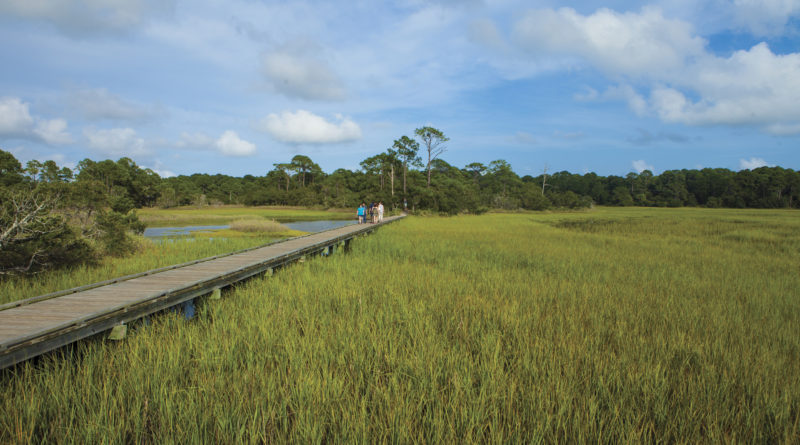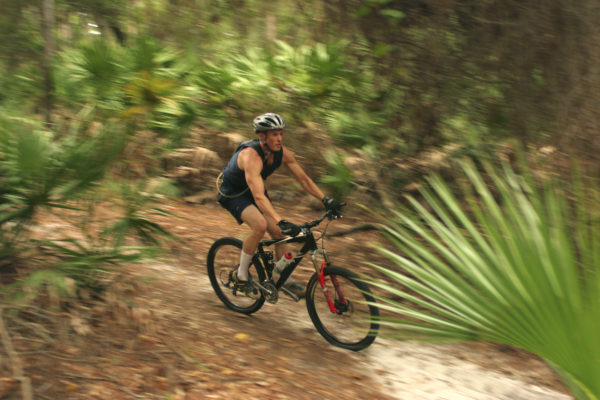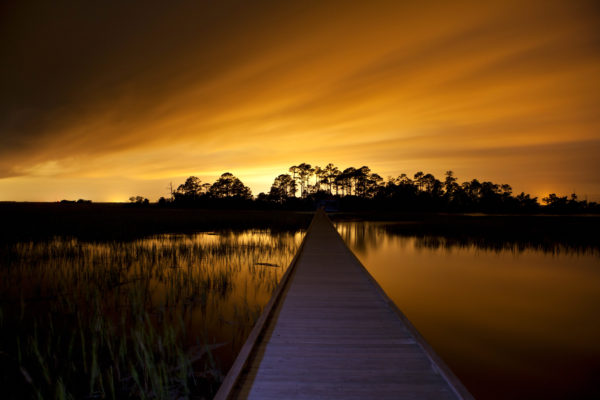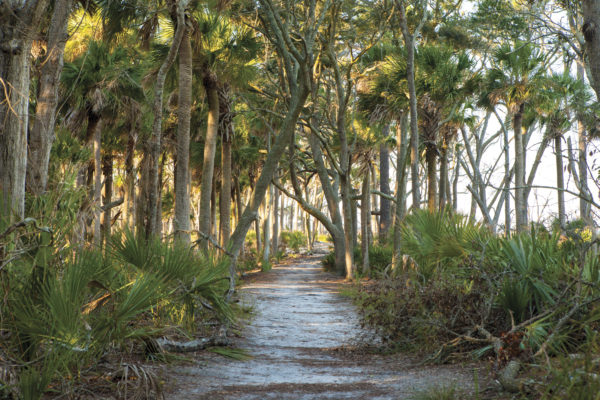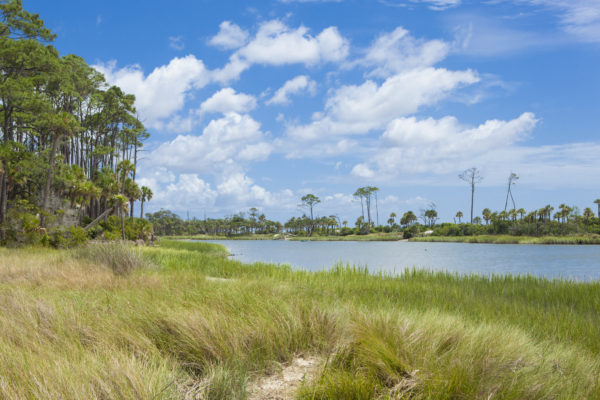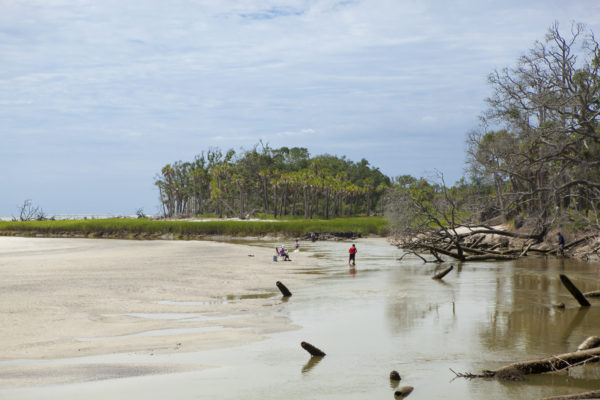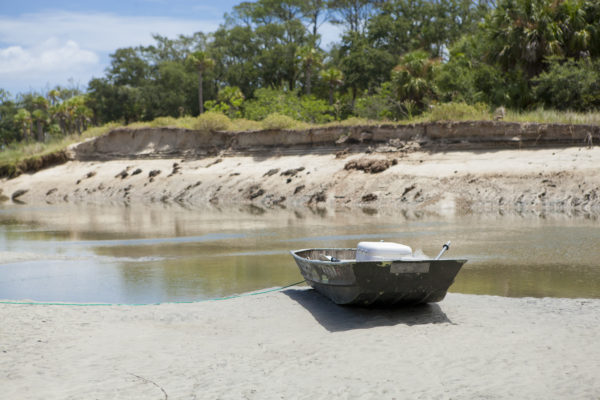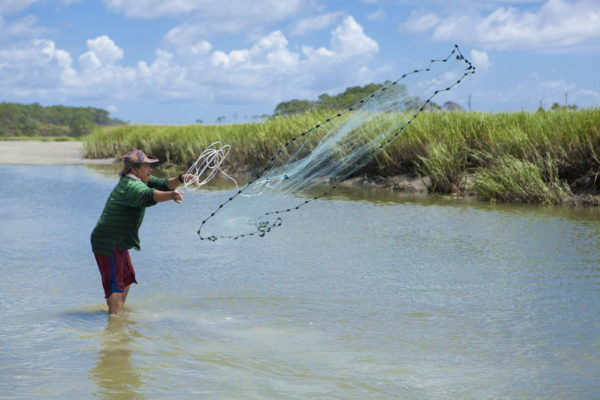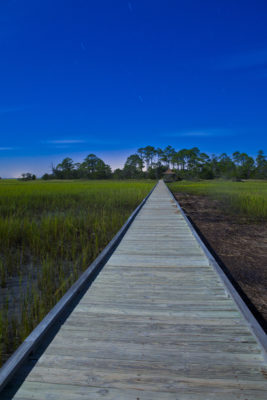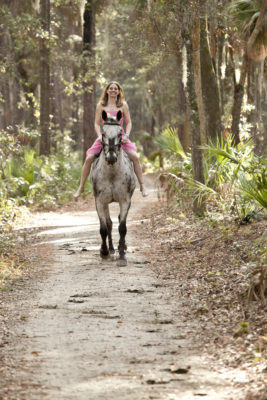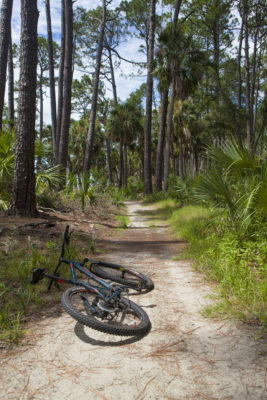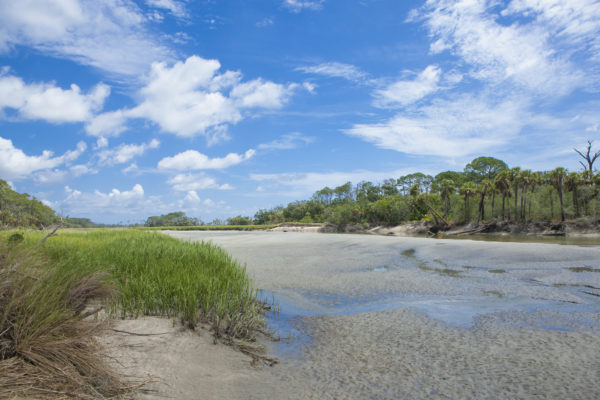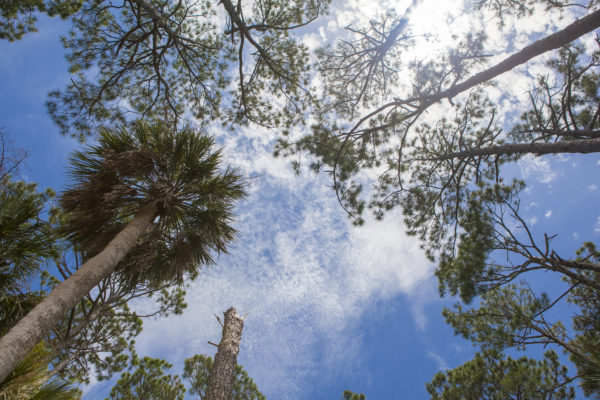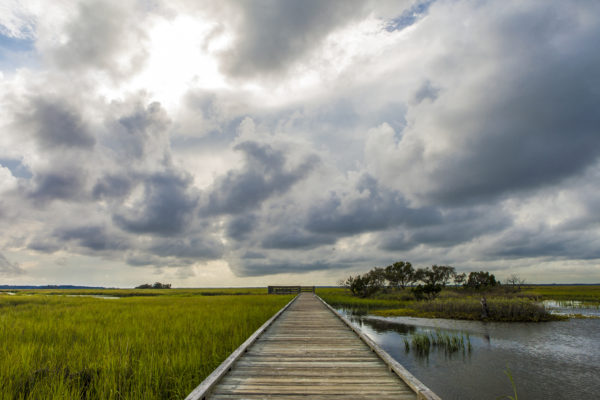Hunting Island State Park Trails
The Heartstrings of the Lowcountry
story by JENNIFER BROWN-CARPENTER photos by JOHN WOLLWERTH
For locals and nonlocals alike, Hunting Island State Park is nothing less than a beautiful sanctuary. With over 5 miles of beach and thousands of acres of marsh and maritime forest, it is no wonder that the park attracts millions of visitors each year.
While the beauty of the beach and the view of the Atlantic from the lighthouse are some of the most popular attractions for visitors, the 9.5 miles of winding, elevating, magical walking trails make up the heartstrings of the park.
The very first trail, the Maritime Forest Trail, dates back to the 1950s. It was originally used as a logging road as the interior of the island was being thinned. In 1977, the Marsh Boardwalk Trail opened as a designation from the U.S. Department of the Interior and was included in the National Trails System.
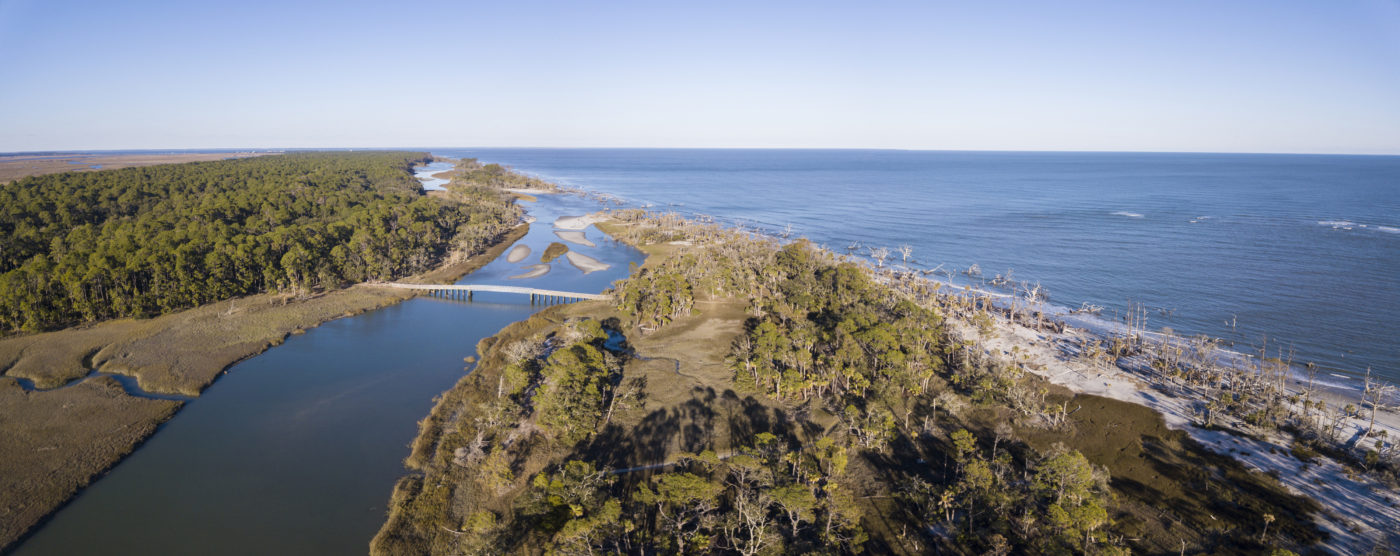
The grid of trails that we have today opened in 1994, bringing the trails up to approximately 8 miles. In 2008, the park received a grant to make all of the trails more accessible. The trails were widened and crushed granite was put down.
In October of 2016, as Hurricane Matthew stormed onto the coast, Hunting Island did exactly what a barrier island is supposed to do, protect the mainland. It did its job so well that the entire park was shut down, and the trails were mostly destroyed, the ones closest to the beach were completely flooded and the rest was covered in piles of trees.
In November of 2017, with help from the Friends of Hunting Island, there was a clean-up day at Hunting Island and the park reopened on Thanksgiving Day. All of the trails were reopened, except for the Diamondback Rattlesnake Trail, which was still in disrepair. The Lighthouse Nature Trail and the Lighthouse Magnolia Connector Trail had both been eradicated during the storm.
The Friends of Hunting Island did some fundraising and provided $11,000 to the American Conservation Experience to come to Hunting Island and do a two-week clean-up project. And in August of 2018, the Diamondback Rattlesnake Trail was finally reopened. It had been closed for almost two years.
Each trail is beautiful and provide so much value to the park, we chose to highlight four that you should visit the next time you are at the park. There is truly a trail for everyone and everything.
Maritime Forest Trail – This original trail remains one of the most beautiful at the park. It is 2 miles of sand dunes with cliffs that allow you to see for miles over the maritime forest. The maritime forest is affected by the ocean in many ways. The trees are pruned by the salt, starting with the trees closest to the water, and rising at almost a 45-degree angle as they get further away from the ocean. The trees are stunted in their growth from the constant stress of hurricanes and tropical storms. This is a healthy environment doing its job: protecting the mainland. Because of the stress that the trees endure, Hunting Island has one of the few maritime forests left on the east coast.
Lagoon Access Recreation Trail – At 1.5 miles, the Lagoon Trail is one of the most dynamic of all the trails, especially the southern end of the trail. The Lagoon Trail was cut by the Army Corps into the Fripp Inlet to create more fishing opportunities. To this day, the lagoon is a great place to fish and watch birds. Ospreys, bald eagles, and blue herons are often seen fishing out of the pond. Due to erosion, the lagoon has been breached, causing it to receive all of its water flow from the ocean. Because of the tide coming in and going out, the dynamic of the Lagoon Trail is constantly changing. If you only walk the trail once every month, you will be able to see the changes steadily taking place.
Marsh Boardwalk Trail – This trail has received a designation as a National Scenic Trail on the National Trails System. The trail is a little over a half-mile to a little hammock island in the salt marsh.
Visitors who explore this trail will find themselves surrounded by three thousand acres of undeveloped salt marsh. This untouched, wild green space is one of the largest estuaries on the east coast and provides the best spot in Beaufort County to watch the sunset.
Diamondback Rattlesnake Trail – The Diamondback Trail is Park Manager, J.W. Weatherford’s, favorite trail. If you walk the trail you will think that you have found the mountains of Beaufort, SC. The trail is built over and around, up and down an ancient sand dune system, which if we were in the mountains we would call ridgelines. The 20-foot elevation change on the 2-mile trail makes a great spot for mountain biking. In some of the areas, you will be able to look out and see interdunal swales, a spot in between the dunes that holds rainwater or saltwater. These swales are great spots for alligators, birds, and insects to hang out. And don’t be surprised if you see the creature that this trail is named for.
Since the trails all reopened in August of 2018, Park Manager J.W. Weatherford says that the park is now focused on updating all of the trail intersections with “You Are Here” map kiosks. The maps will help visitors remain aware of their whereabouts while enjoying the 9.5 miles of trails. “The longterm goal is to not lose any more trails due to storms,” Weatherford jokes.
Hopefully, the trails won’t be hit by storms anytime soon, but just in case, we encourage you to get out and explore them today.

